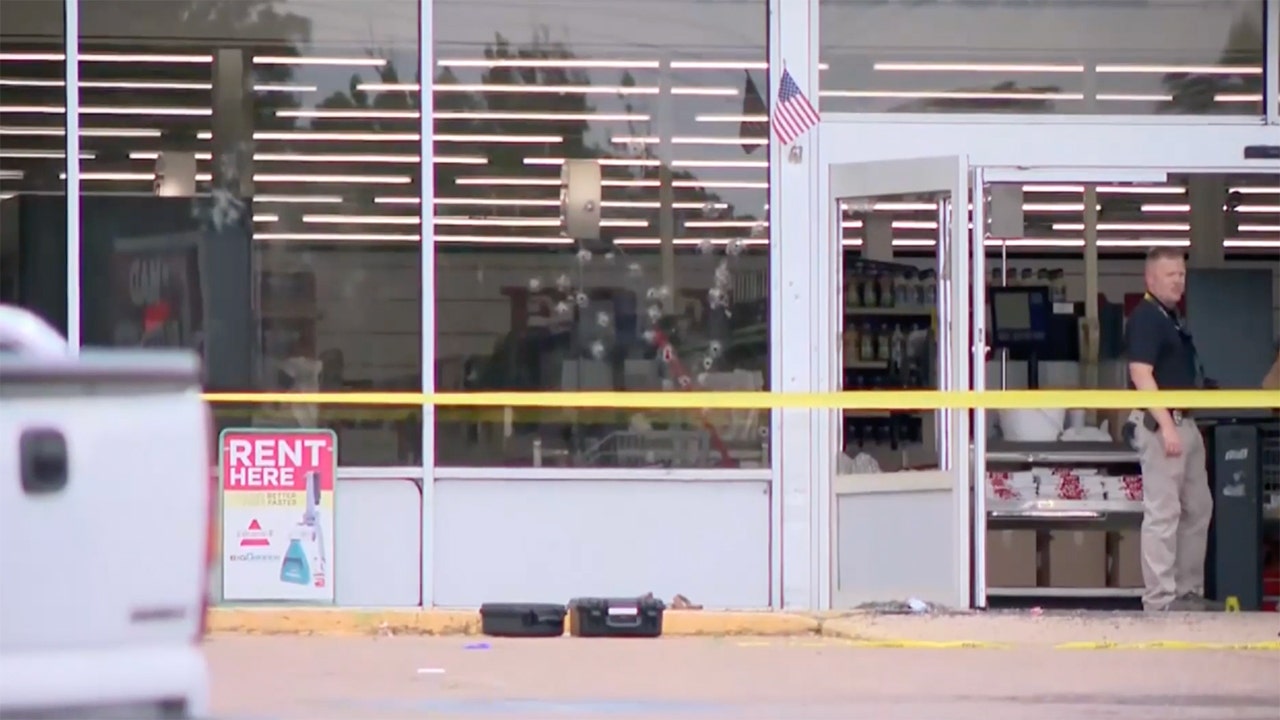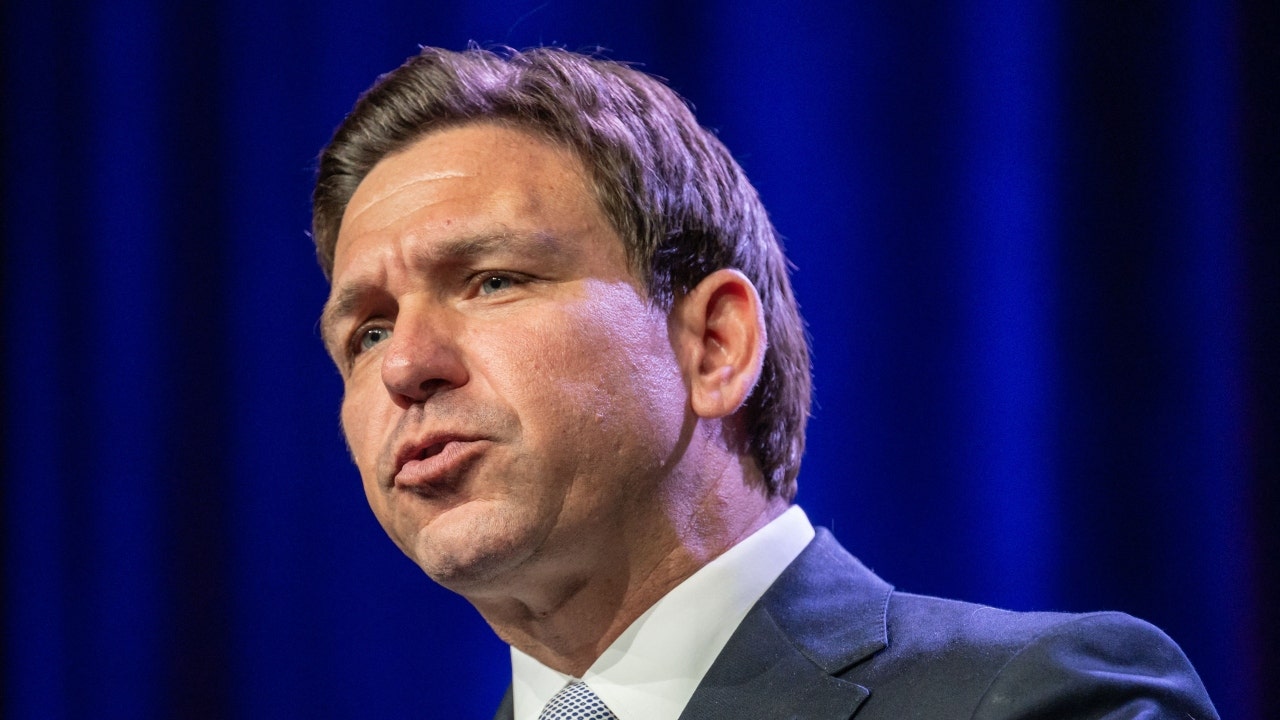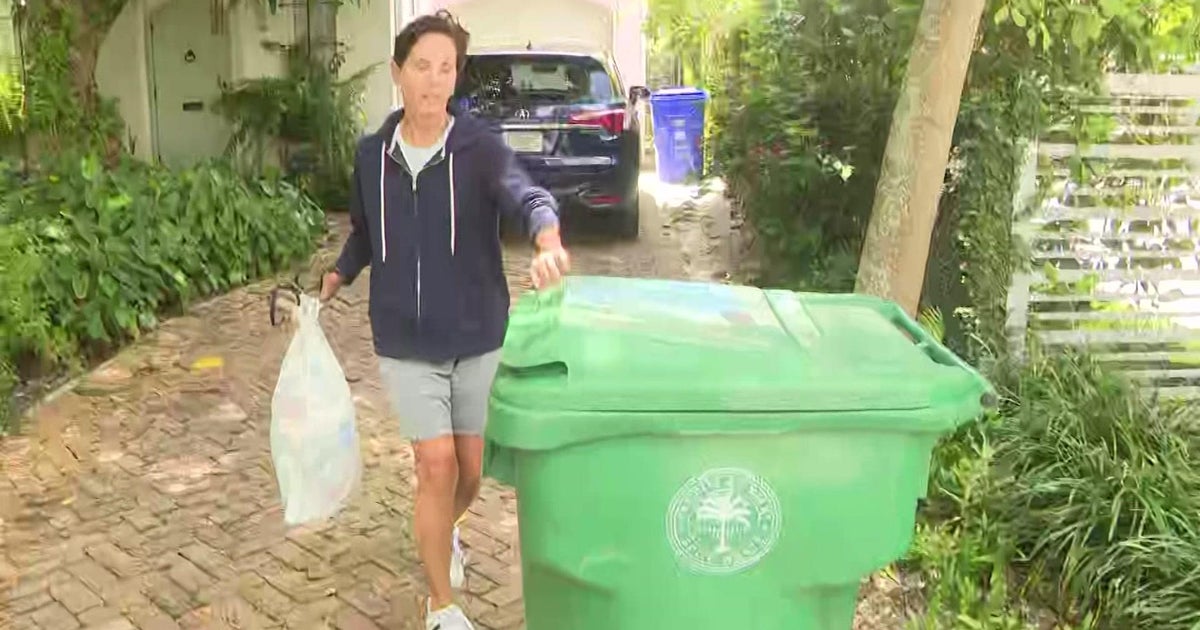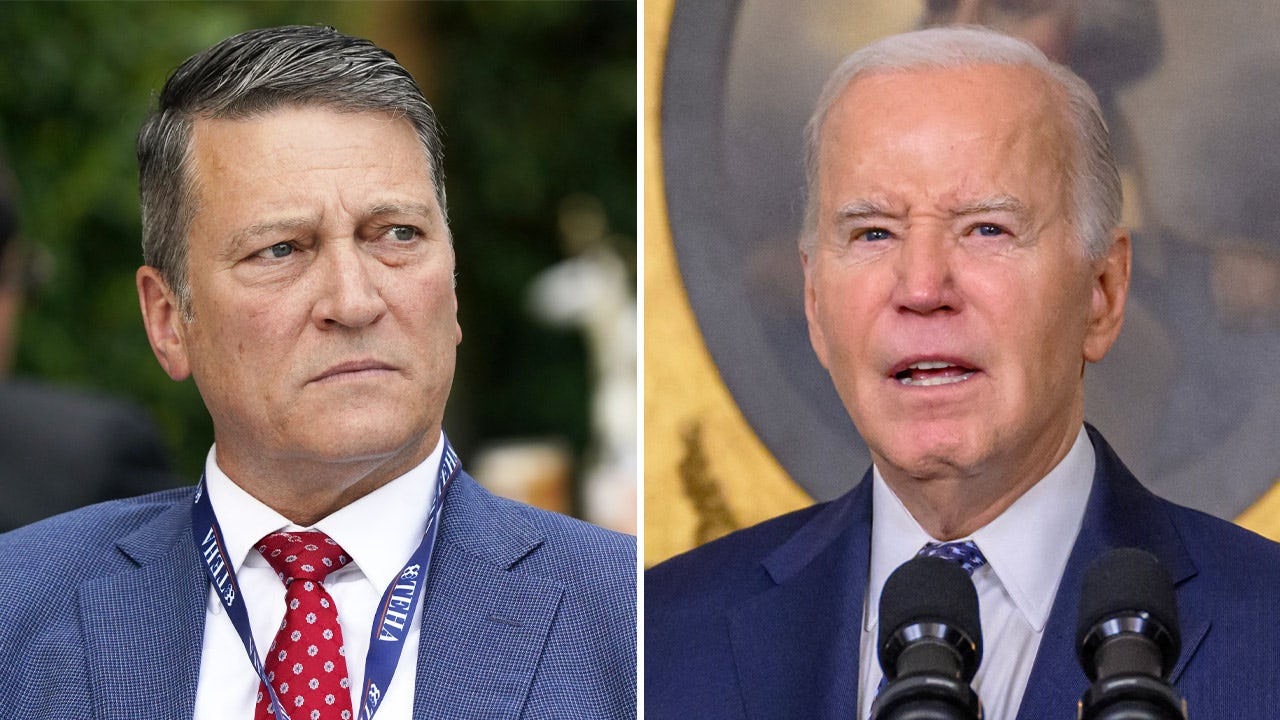The powerful glide-bombs that Russia has used to such great effect to pound Ukrainian cities into rubble have also been falling on its own territory, an internal Russian document has revealed.
Washington
Russia’s devastating glide bombs keep falling on its own territory

Roughly comparable to the more advanced American JDAM guided bombs, these glide bombs are large Soviet-era munitions retrofitted with guidance systems that experts say often fail — resulting in impacts on Russian territory.
The majority of the bombs were discovered by civilians — forest rangers, farmers or residents of villages surrounding the city. In most cases, the Defense Ministry didn’t know when the bombs had been launched, indicating that some of them could have been there for days.
According to the document, at least four bombs fell on the city of Belgorod itself, a regional hub with a population of about 400,000 people. An additional seven were found in the surrounding suburbs. The most, 11, fell in the Graivoron border region where some could not be recovered because of the “difficult operational situation.”
The document, originally intercepted by Ukrainian intelligence and passed on to The Post, includes a spreadsheet of incidents citing emergency decrees on bomb cleanup and evacuation and appears to be a product of the Belgorod city emergency department.
Astra, an independent Russian media outlet, verified that many of the incidents in the document matched those it had collected from local governments and reports in local news media. People mentioned as witnesses have been confirmed as residents.
While the bombs usually fail to detonate, one of the first recorded hitting Belgorod in April 2023 did explode when it crashed into a normally busy street, creating a crater 65 feet wide, shattering windows, and hurling parked cars onto roofs of buildings. The impact happened at night, however, and no casualties were reported. A day later a second, unexploded bomb was found buried 23 feet into the ground.
Russian military acknowledged at the time that the “accidental release of aircraft munition” from a Russian Su-34 fighter-bomber was behind the explosion. The document later confirmed it was FAB-500, a glide bomb, carrying a 500 kilogram, or 1,100 pound, payload.
Local authorities generally remain quiet about the incidents, only reporting “accidents,” blaming Ukrainian shelling or just not reporting the various explosions rattling the area, particularly more recently.
On May 4 — after the period covered by the document — another bomb fell on Belgorod, injuring seven people and damaging more than 30 houses in a small community. Citing a source in the emergency services, the Astra media outlet reported it was also a FAB-500.
GET CAUGHT UP
Stories to keep you informed
Gov. Vyacheslav Gladkov said only that “an explosion happened.”
“The governor always reports what exactly caused the explosion, but this time he decided not to disclose it,” independent local outlet Pepel noted at the time. “This indirectly confirms that the explosion was caused by a Russian air bomb that fell on the house during the bombing. The nature of the destruction also indicates this.”
On May 12, another blast destroyed several stories of an apartment block in Belgorod, killing 17 people. The Russian military blamed a Ukrainian missile, while the Conflict Intelligence Team, a Russian research group specializing in open-source investigations, said video from the scene indicated it was the result of another accidental FAB-500 bombing or a rogue antiaircraft missile fired by a Russian defense system.
On June 15, an explosion took place in the town of Shebekino, near Belgorod, and part of a five-story building collapsed, killing at least five, likely another glide bomb mishap.
According to its own tallies, Astra estimated that Russia has accidentally dropped more than a hundred bombs on its own territory as well as occupied areas in eastern Ukraine over the past four months — the same period that has seen a major increase in the use of glide bombs.
The Russian government has not responded to a request for comment on the document or reports of failed glide bombs.
The glide bombs are a Soviet relic hailing from the Cold War, designed as “dumb bombs” to be dropped on a target. Russia adapted this large inventory of unguided bombs to modern warfare by retrofitting them with guidance systems known as UMPK kits — cheap pop-out wings and navigation systems.
This allows Russian Su-34 and Su-35 jets to launch them from a distance of about 40 miles, which is out of reach for most Ukrainian air defense systems.
“A certain percentage of Russian bombs is defective. This problem has existed since they started using these UMPK kits and it’s not being fundamentally solved. We think these accidental releases are caused by the unreliability of these kits, something that does not seem to bother the Air Force,” Ruslan Leviev, a military expert with the Conflict Intelligence Group that has been tracking Russian military activities in Ukraine since 2014, said in a recent front line update.
Since developing the weapons and especially with the start of 2024, Russia has launched hundreds and hundreds of these bombs at Ukrainian positions, indicating a fairly low, but not insignificant rate of failure.
“According to our estimates, only a fraction of these bombs fail, so it doesn’t affect the practical effectiveness of this weapon, no matter how cynical that may sound,” Leviev said. “Unlike Western high-precision bombs, the UMPK kits are produced relatively cheaply and in large quantities, using civilian electronics, where reliability requirements are much lower.”
Glide bombs are also not as precise as cruise missiles, and often miss the target, but because of sheer explosive power they still do significant damage.
The glide bombs have put added pressure on Ukraine’s ground-based air defenses and have been instrumental in Russia’s demolition of Avdiivka, which its troops conquered in mid-February, marking its most significant gain since the capture of Bakhmut a year ago.
“Those weapons allow Russia to supplement an inadequate inventory of tactical air-launched missiles and to avoid using free-fall bombs that expose pilots to a greater risk of being shot down,” according to recent analysis by the International Institute for Strategic Studies.
Ukraine’s best defense against them is the U.S. Patriot surface-to-air missile that can destroy a Russian aircraft before it approaches to release the bomb, but the systems are in short supply.
In late March, the Defense Ministry announced the development of a new, heavier version of the glide bomb, the FAB-3000, weighing twice as much as the next-biggest model. The number corresponds to the weight in kilograms, making it more than 6,000 pounds. It was finally deployed June 21 against the Ukrainian village of Liptsy.
The ministry also said the production of the lighter FAB-500 and FAB-1500 had been drastically increased.

Washington
Opinion | Joe Biden should step aside now

We are at a critical point in our country’s history. It is not a time to think about which party or which tribe you belong to, but rather what is most important for the future of our country and our children.
On Tuesday, I called for President Biden to withdraw from the 2024 presidential election.
The entire country was left stunned during and after last Thursday’s debate. The indelible images and sound bites from that evening will remain with us, repeated in campaign ad after campaign ad, and make it impossible for Biden to win his election. It left people in my district feeling sick to their stomachs. Biden has had fewer and fewer press appearances as his term has proceeded, raising questions about his abilities, and raising fears from the public that our president’s staff has been lying to us about his capabilities.
This decision to speak out is not a referendum on Biden’s accomplishments, nor how good of a person the president is, but rather what the best options for our country should be. I have always said we are going to do the right thing, for the right reasons, in the right way.
There are a lot of people who support Donald Trump, especially in my district, and many of the grievances the former president raises in his campaign ring true for many Americans. However, we need a serious, positive, solutions-based approach to the very serious issues our communities face. In my mind, anyone who spends time quibbling about his golf handicap instead of answering questions about how to make life better for all Americans should be disqualified from the presidency. It’s time for a new generation of leaders to take the reins.
For years, Republican insiders have privately expressed grave concerns about Trump yet sing his praises publicly. It is frustrating to see that this public-private dichotomy is not a single-party phenomenon but rather is one of the most telling aspects of why people don’t trust either party. This is the furthest thing from bipartisanship that the country wants to see.
Biden ran in 2020 as a transitional leader for the next generation. When he announced a reelection campaign in 2023, I publicly commented that I was one of the 75 percent of the people in the country that was not happy with a rematch. Both parties have deep benches. For the good of our country, it is time we showcase them.
This is President Biden’s moment — and his biggest test. He should put personal ambition aside, and then stand up and announce he will withdraw from consideration. The deep Democratic bench should work to nominate a younger slate. We can then join together to focus on the problems and solutions that are most important to our country.
We must focus on lowering the costs of gas, groceries and health care; securing the border and creating a pathway to citizenship for longtime law-abiding residents; and protecting the rights of women and eliminating government-mandated pregnancies. These are real and pressing problems for Americans and new leadership is needed.
Washington
Giuliani disbarred in N.Y. over false statements about 2020 election

Giuliani was already suspended from practicing law in New York, where he was admitted to the bar in 1969.
The court ordered Giuliani to be “disbarred from the practice of law, effective immediately, and until the further order of this Court, and his name stricken from the roll of attorneys and counselors-at-law in the State of New York.”
A spokesman for Giuliani, a former U.S. attorney for the Southern District of New York, criticized the decision and said he would appeal it.
“Members of the legal community who respect the rule of law in this country should immediately come forward and speak out against this politically and ideologically corrupted decision,” the spokesman, Ted Goodman, said in a statement.
Giuliani said in a social media post that he was “not surprised” he was disbarred. He argued that the case against him was “based on an activist complaint, replete with false arguments.”
Giuliani could be disbarred in Washington, D.C., where he has also been suspended from practicing law.
Giuliani has faced a storm of legal problems over his leading role in Trump’s efforts to overturn his 2020 reelection defeat. He has been indicted on criminal charges in Georgia and Arizona over alleged schemes to subvert the 2020 election in each state. Last year, he was ordered to pay $148 million in a defamation lawsuit brought by two Georgia poll workers.
Giuliani filed for Chapter 11 bankruptcy in New York after the defamation case.
The decision Tuesday came from the First Judicial Department of the Appellate Division of the New York Supreme Court. The ruling found Giuliani “repeatedly and intentionally made false statements” about the 2020 election — “some of which were perjurious” — to courts, the public and state lawmakers.
“In so doing, respondent not only deliberately violated some of the most fundamental tenets of the legal profession, but he also actively contributed to the national strife that has followed the 2020 Presidential election, for which he is entirely unrepentant,” the ruling said.
John Catsimatidis, the owner of a New York radio station where Giuliani was abruptly taken off the air in May over his comments about the 2020 election, said in a text message to The Washington Post that the court’s decision was “very sad” for Giuliani.
Azi Paybarah contributed to this report.
Washington
OSHA proposes rule to protect workers exposed to extreme heat

“The purpose of this rule is simple. It is to significantly reduce the number of work-related deaths, injuries and illnesses suffered by workers who are exposed to excessive heat and exposed to these risks while simply doing their jobs,” OSHA Assistant Secretary of Labor Doug Parker said on a call with reporters.
“Whether they are making deliveries, carrying mail all day, working construction, picking vegetables, repairing power lines, doing landscaping. It’s these things that put workers at risk.”
OSHA officials have been working on the proposed regulation for more than two years at the urging of public health and climate advocates.
The proposal comes as summertime heat envelopes the United States and the hottest month of the year gets underway. At the beginning of this week, over 60 million Americans were under heat alerts.
Excessive heat warnings now cover much of California, including in and around San Francisco, and the National Weather Service office that serves much of California’s Central Valley warned of a “dangerous, prolonged heat wave that will last several days.” Southeastern states are also facing hot and soupy weather and at least 45 million Americans will probably have to endure highs at or above 100 degrees this week.
Under the proposed rule issued Tuesday, OSHA would adopt two heat index thresholds that would apply nationally and would factor in humidity as well as temperature. One, at 80 degrees Fahrenheit, would require employers to provide drinking water and break areas that workers can use as needed. Employers would also need to have a plan for new and returning workers to gradually increase their workload so their bodies adjust to the heat.
More protections would kick in at 90 degrees, including monitoring for signs of heat illness and mandatory 15 minute rest breaks every two hours. Employers would be required to check on people working alone every few hours and to issue a hazard alert, reminding their workers of the importance of staying hydrated.
Juley Fulcher, a worker health advocate for the nonprofit Public Citizen, which has pushed for a national heat standard, said the proposal is based on scientific research on how the body responds to heat and borrows from state workplace heat safety laws. So far, only five states have such protections: California, Colorado, Minnesota, Oregon and Washington. Workers in Maryland could soon gain protections — there is a draft rule that is not yet final.
Fulcher praised the OSHA proposal, saying the agency had “done a really good job.” Although some Americans might balk at the suggestion they need protection from 80 degree weather, Fulcher said it’s important to remember that official temperature readings are taken in the shade. Once you factor in sunlight and humidity, an 80 degree day can feel more like 95 or 100, she said.
“If you’re doing really heavy work, you’re generating a lot of internal heat in addition to that external heat,” she said. “You’re not going to be able to cool off at those temperatures.”
The rule doesn’t cover everyone. “Sedentary” employees are exempt from the protections, as are those in indoor job sites kept below 80 degrees, emergency response workers and remote employees. And, because OSHA regulations do not extend to public employees, the regulation won’t apply to government workers and public school teachers, many of whom are confronting increasingly high temperatures in school buildings without air conditioning.
Some businesses and industry groups are gearing up for a battle over a regulation many see as burdensome, redundant and expensive.
Critics have made their displeasure known in letters to the agency. Some industries have argued they are already protecting employees from heat and that a new regulation would be duplicative or, worse, get in the way of what they’re doing. They have pushed back against the rule’s expected acclimatization requirements, which would mandate a gradual ramping up of work hours during high heat. Some have questioned the entire initiative, saying that a workplace heat rule is unnecessary because not many workers die of heat exposure.
From 1992-2019, the Bureau of Labor Statistics found there were an average of 32 heat-related workplace fatalities per year. There were 43 such deaths in 2022, up from 36 in 2021.
Agency officials and public health advocates say these numbers underestimate the scale of the problem, given underreporting and the difficulty of attributing a death to heat. Workplace data aside, deaths from heat in the U.S. have steadily increased in recent years, exceeding 2,200 last year.
-

 News1 week ago
News1 week agoA Florida family is suing NASA after a piece of space debris crashed through their home
-

 Politics1 week ago
Politics1 week agoBiden official says past social media posts don’t reflect ‘current views,’ vows to support admin ‘agenda’
-

 World1 week ago
World1 week agoNew Caledonia independence activists sent to France for detention
-

 World1 week ago
World1 week agoIsrael accepts bilateral meeting with EU, but with conditions
-

 World1 week ago
World1 week agoNetanyahu says war will continue even if ceasefire deal agreed with Hamas
-

 News1 week ago
News1 week agoArkansas police confirm 4th victim died in grocery store shooting
-

 Politics1 week ago
Politics1 week agoDeSantis signs bill allowing residents to kill bears, vetoes bill that fines slow left lane drivers
-

 News1 week ago
News1 week agoWoman accused of trying to drown Muslim child in Texas in possible hate crime
















